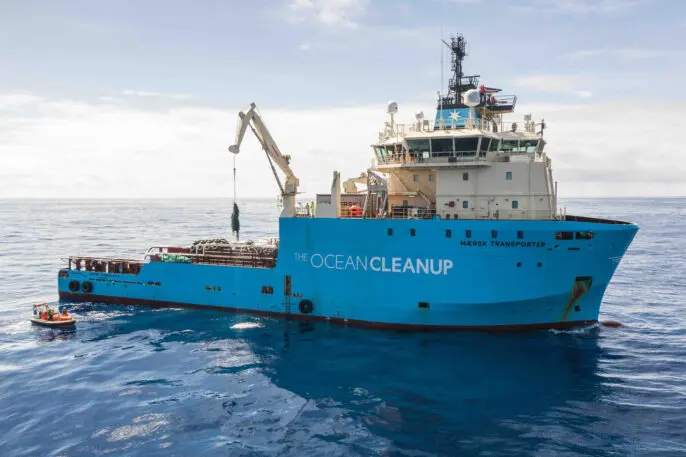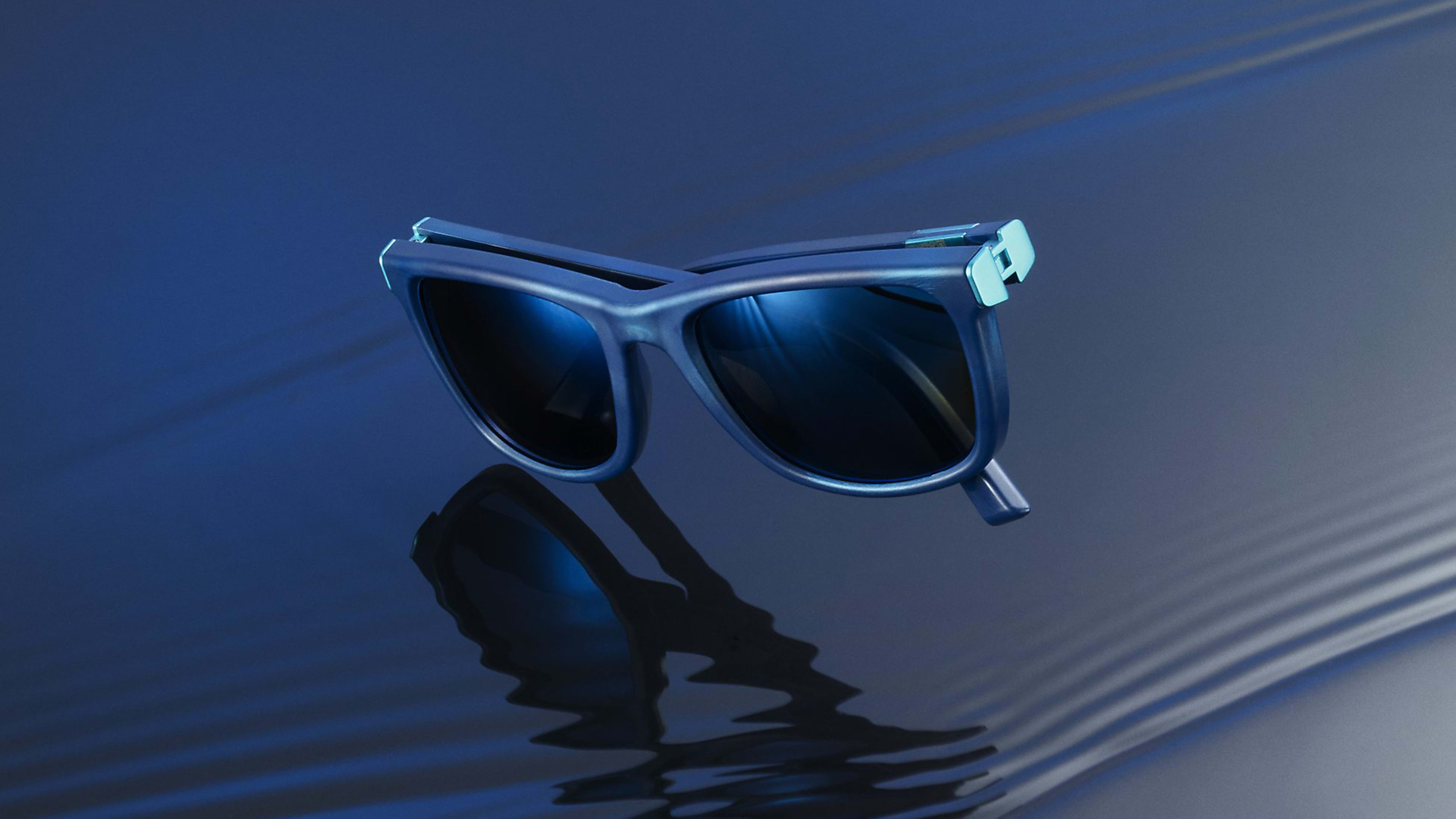Late in 2019, the Ocean Cleanup crew returned from the Great Pacific Garbage Patch with its first load of plastic waste harvested from the ocean during a pilot test of its trash-fighting technology, proving that it could skim plastic off the surface of the water. But then came the next hurdle in the company’s yearslong quest to prove its effectiveness: how to recycle that plastic so it didn’t become waste again.

“It was actually quite a challenge, because this material has sometimes been out there for decades,” says Boyan Slat, CEO and founder of the Ocean Cleanup. “A lot of this stuff is quite brittle, quite degraded. It’s also very mixed. You see half of it being fishing nets, the other half being more rigid objects, like bottles and crates. So turning it into a usable material was quite a journey. When we announced that we were going to do this late last year, we didn’t know whether we could do it.”
The nonprofit unveiled its first ocean plastic product today, a pair of $199 sunglasses made from the new material and created by star designer Yves Behar. To get to the final product, the team worked with a series of partners to sort through the waste they’d pulled out of the water, wash it, shred it, and turn it into pellets that could be used in manufacturing. “We had to set up a completely new supply chain, because this is a material that’s never been processed before,” Slat says. The sunglasses are made primarily from abandoned fishing nets and HDPE plastic; some of the other types of plastic, which are harder to process, may be recycled using different advanced recycling technologies later and made into different products. The company will use the proceeds from the sale of each pair of sunglasses to fund the deployment of the next prototype.
The recycled material looks slightly different than virgin plastic. “We said, why not embrace the imperfections?” Slat says. “We played with the mixture, and eventually got to this look and feel of the material . . . it’s kind of wavy-looking and has a nonhomogeneous look to it. To me, it’s kind of an asset, because it’s a bit of a reminder of where this plastic came from.” The nonprofit also worked with an external organization to certify the source of the plastic, something that hadn’t been done before. (Some companies have labeled products as made from “ocean plastic” when they really mean they’re using plastic recycled in communities near beaches; some others have used only a small percentage of plastic actually pulled from the ocean to make the same claims.)
By one estimate, five trillion pieces of plastic are in the world’s oceans and up to 14 million metric tons of additional plastic enters the oceans each year. The Ocean Cleanup has taken on the challenge of trying to design technology that can collect plastic from areas such as the Great Pacific Garbage Patch, a gyre where large amounts of trash accumulate and then break down into much smaller pieces of microplastic. The technology uses large U-shaped barriers that float in the water, passively collecting plastic that can later be collected. After years of working on the design, the team got the system to work in 2019. But it’s still not ready for full deployment; engineers are now working on redesigning it, based on lessons learned during the pilot, to create the larger-scale devices that it ultimately plans to use.

In 2019, the nonprofit also began deploying new devices to catch plastic in rivers before it can reach the ocean. In a recent study the team coauthored in Science, they found that even if recycling and plastic reduction were widely scaled up, that alone wouldn’t reduce the amount of plastic reaching the ocean because plastic production is increasing so much. The other changes are also important but aren’t enough on their own. The team is now grappling with the bureaucratic systems that need to be in place at each river to make each system work, and has faced other logistical challenges. One device sent to the Dominican Republic was delayed for months because of a COVID-19 lockdown. But it ultimately sees the technology as necessary.
Slat argues that taking plastic out of the ocean is necessary, even as some critics have said that the Ocean Cleanup—which has raised millions—has diverted funding from more proven solutions. (Another group, Ocean Voyages Institute, has removed tons of plastic from the ocean using a shipping crew and drones’ GPS trackers to find debris, though if the Ocean Cleanup’s tech can work autonomously, it will be able to scale up much further.) When the Ocean Cleanup team returns to the Great Pacific Garbage Patch, and later deploys a fleet of devices to capture plastic, it plans to continue turning it into useful products that are made to be durable and circular. When the sunglasses eventually wear out, they are designed to be easily taken apart so the material can be recycled again.
Recognize your brand’s excellence by applying to this year’s Brands That Matter Awards before the early-rate deadline, May 3.
